Diving - The adventure continues!
Further Adventures under the sea (and smaller bodies of water!)
After my return from Mauritius and California, my next couple of dives were much more down to earth, with a couple of dives in a horribly murky Wrasbury.
On a good day, a dip in Wrasbury can be quite enjoyable, but clearly there had been a lot of novice divers stirring up the silt and despite being the first in and away from the main slips, visibility was terrible. Still, it was a useful chance to practice diving in a dry suit again, after a number of wetsuit dives, ahead of a week diving in the Sound of Mull.
Lochaline, Sound of Mull
If you've read our holiday page, you'll know we holidayed in Lochaline (pronounced Lock Allan) some years ago, so it was a return to a famlilar haunt when the club decided to spend a week staying, and diving from, there in late August.
We had a long drive up, but I slept a lot of the way, and we stayed in a lovely bungalow that serves as a dive lodge, just a few minutes from the pier by the ferry (And Shore Cottage where we'd stayed before).
Most mornings we'd drive down to the pier and board our boat.
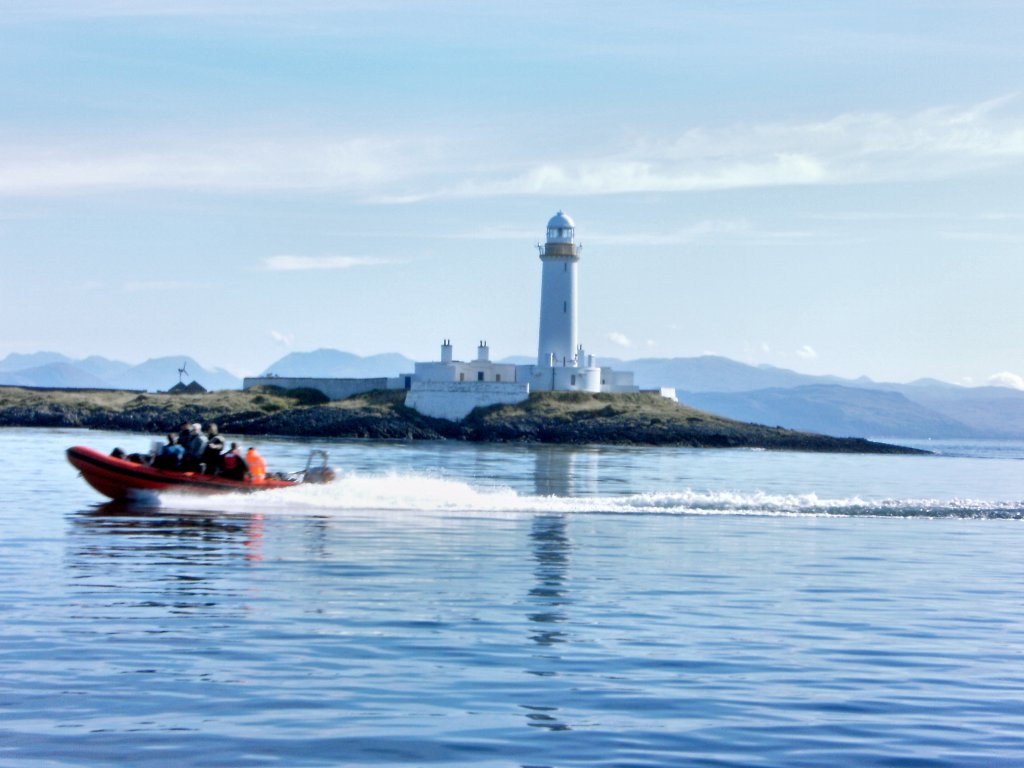
Beautiful weather on the Sound of Mull
We had 6 days diving, wth a day off in the week, although a number of us took the opportunity to do a wall dive that day, which was actually a very good dive as it turned out.
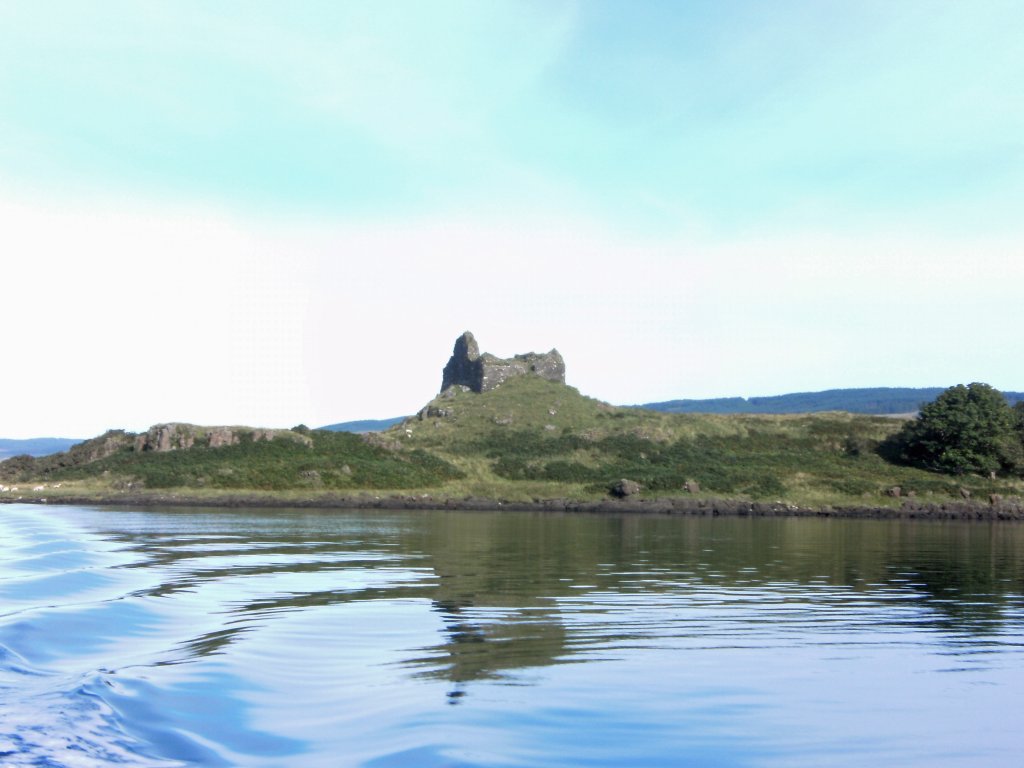
Castle near Lochaline
The first day, we set off to dive two wrecks, the Breda and the Thesis.
The former is still fairly intact as a ship, about 120m long and features some very dark holds. We were advised not to penetrate the wreck, but there's still plenty to see and do on a dive. You can just about get end to end on a dive, in our experience and there was plenty of life on the Breda to take in as well as impressively complete as a wreck to explore.
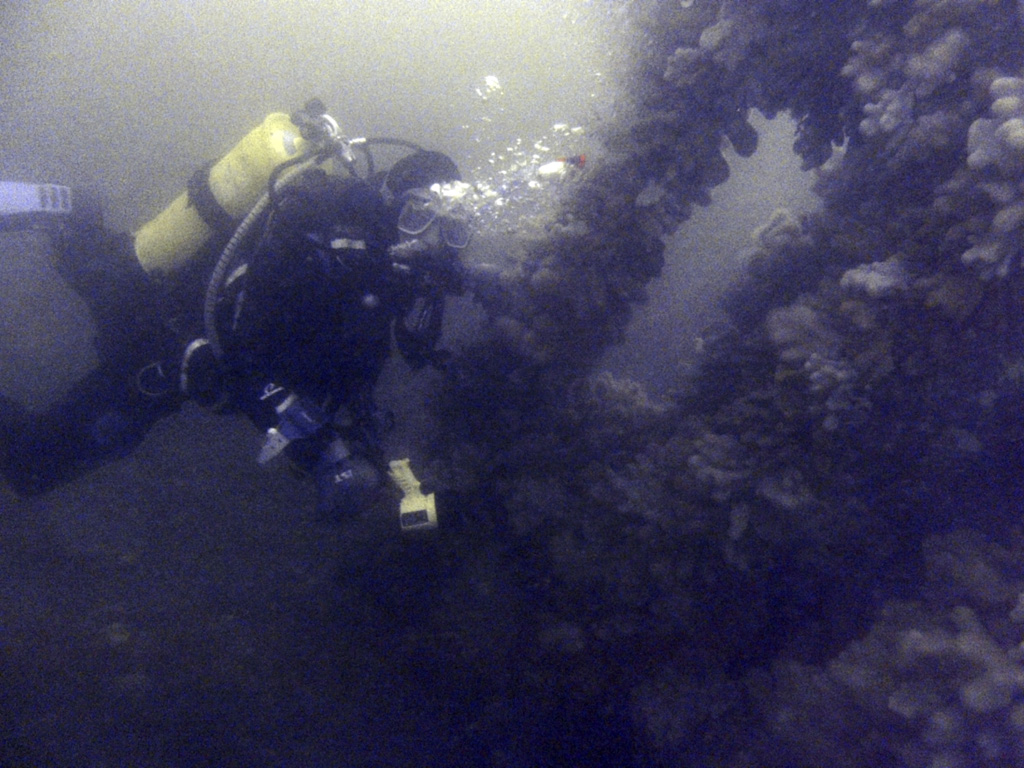
Thesis has a lot of visible ribs
The Thesis, by comparison, has a lot of missing plates and therefore, much of the hull is ribs. It reminded me quite a lot of the "Tabarka" I'd dived in Scapa Flow, although slightly siltier and darker.
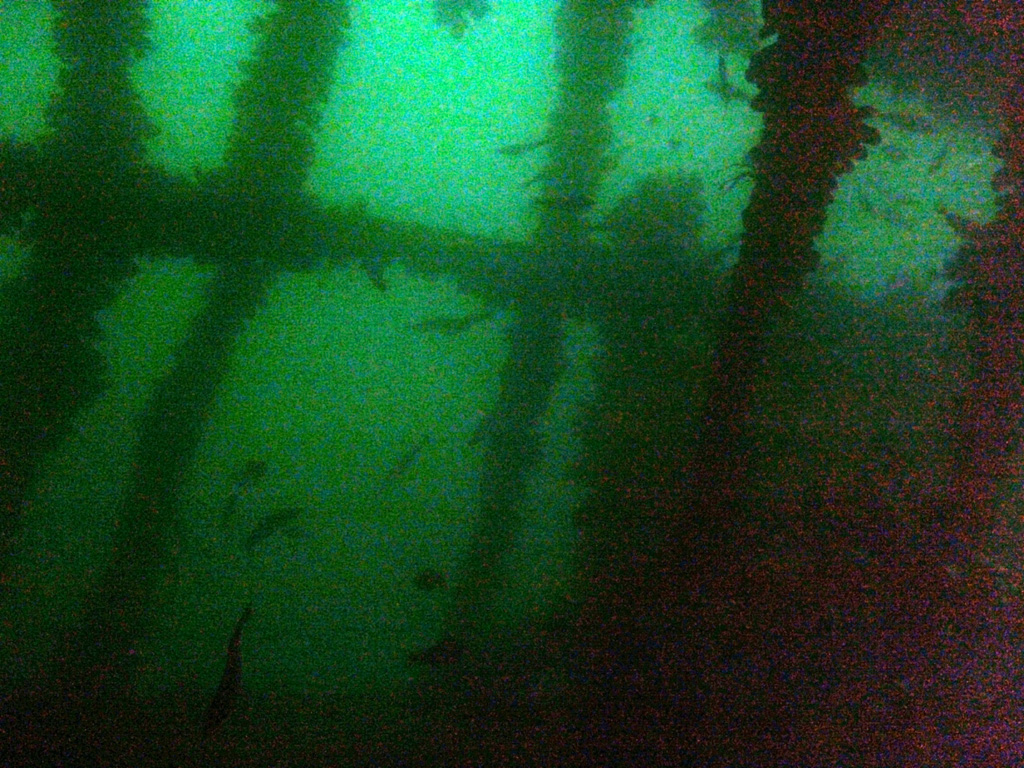
"Cathedral" like light pattern is more apparent to the naked eye.
We swam, mostly, around the wreck on this dive, taking in the shape and structure.
For a first day, it'd been really good, with excellent weather too, and everyone was enthusiastic about the week ahead.
The second day, we dived the Ronda, a strangely positioned wreck that sits almost vertically, going down to 50m, although I never got that deep, although this was my deepest dive to date, getting to 34.4M. In fact, the most interesting part of the wreck is fairly shallow, around the rudder and most of us spent most time in that area.
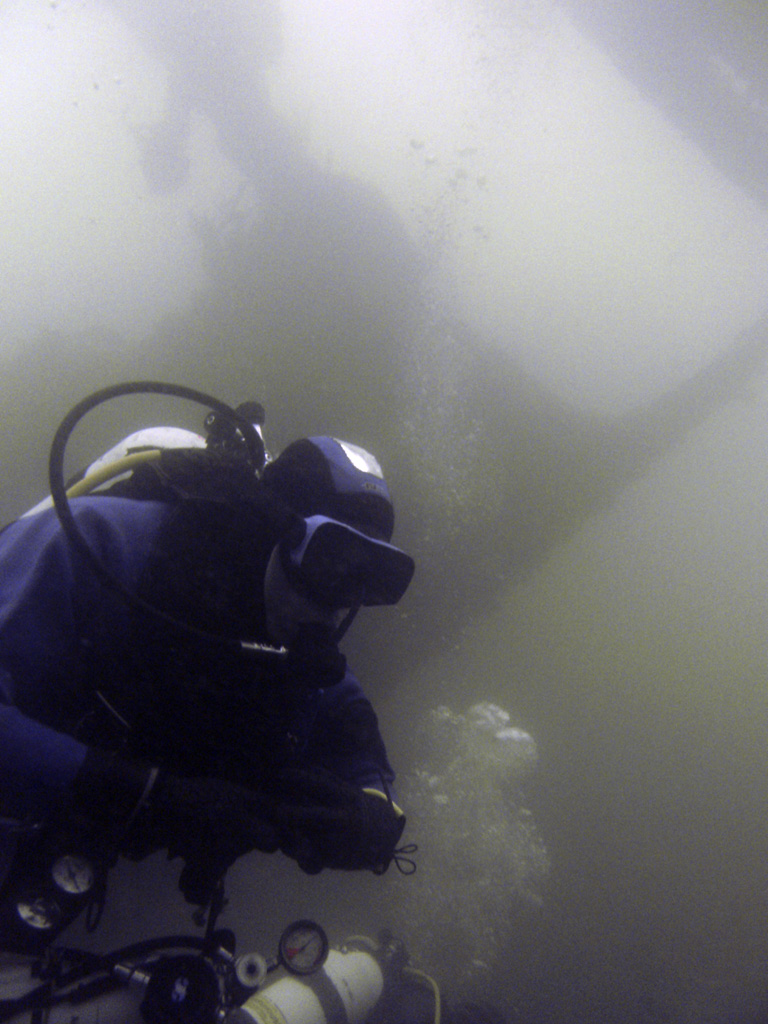
Martin P and the Ronda's rudder
Our second dive was on Calve Island, a wall dive, but there was some confusion with the instructions and Martin Steagall and I went the wrong way and never saw the wall. As we had another wreck dive planned, we reboarded the boat and decided to save no-deco time for that.
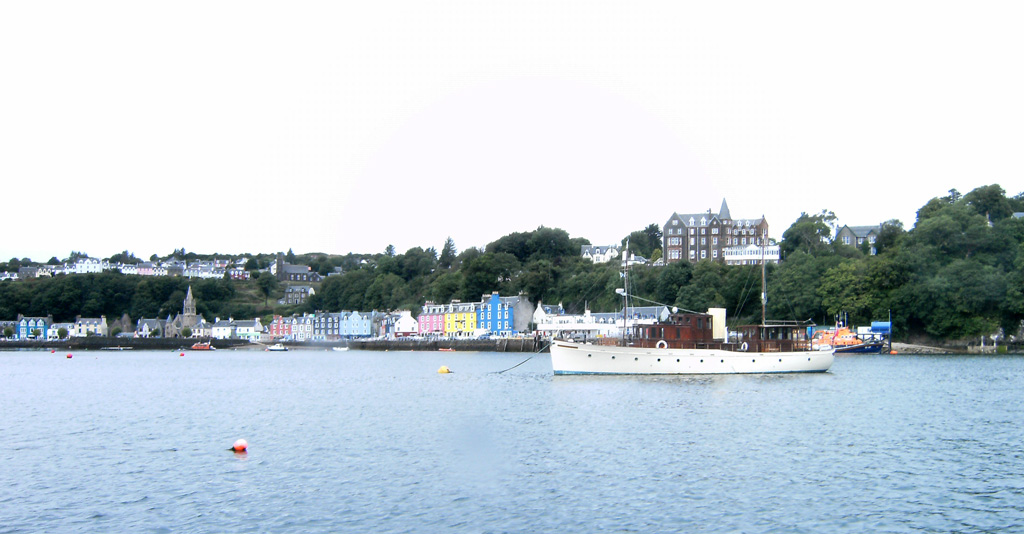
We stopped in Tobermory, on Mull, a couple of times during the week
The third dive was to have been the famous Hispania, but there were 3 RHIBs there and the skipper suggested we skip it and dive on the Shuna instead.
I'll admit to being a little disappointed, but once on the Shuna that went away. Again it's a biggish wreck in excellent condition with plenty of life to see and plenty of wreck to explore. We came away buzzing with what a great dive it had been.
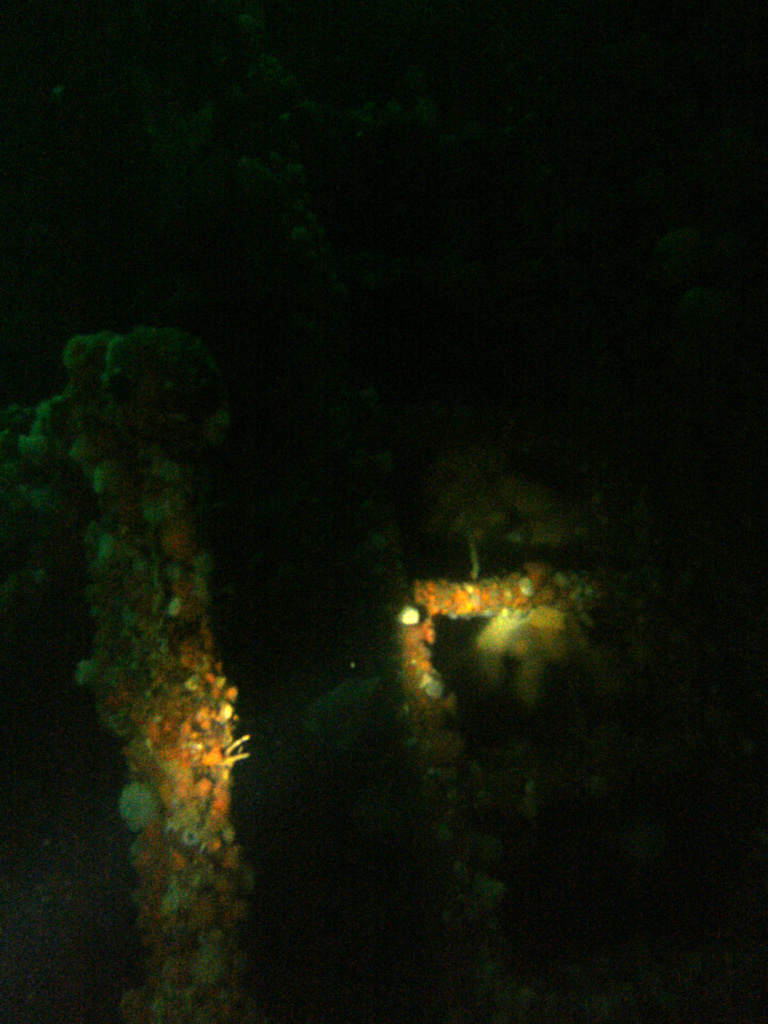
Ladder on the Shuna
The next day, great though the Shuna had been, put it into context. After a 90 minute wait for the notoriously fickle tide, we dived the Hispania.
This is possibly, the most enjoyable wreck I've dived, including those at Scapa Flow. The whole ship is covered in soft coral, there's virtually nothing to hold onto that isn't soft, but the hull and some superstructure are remarkably intact.
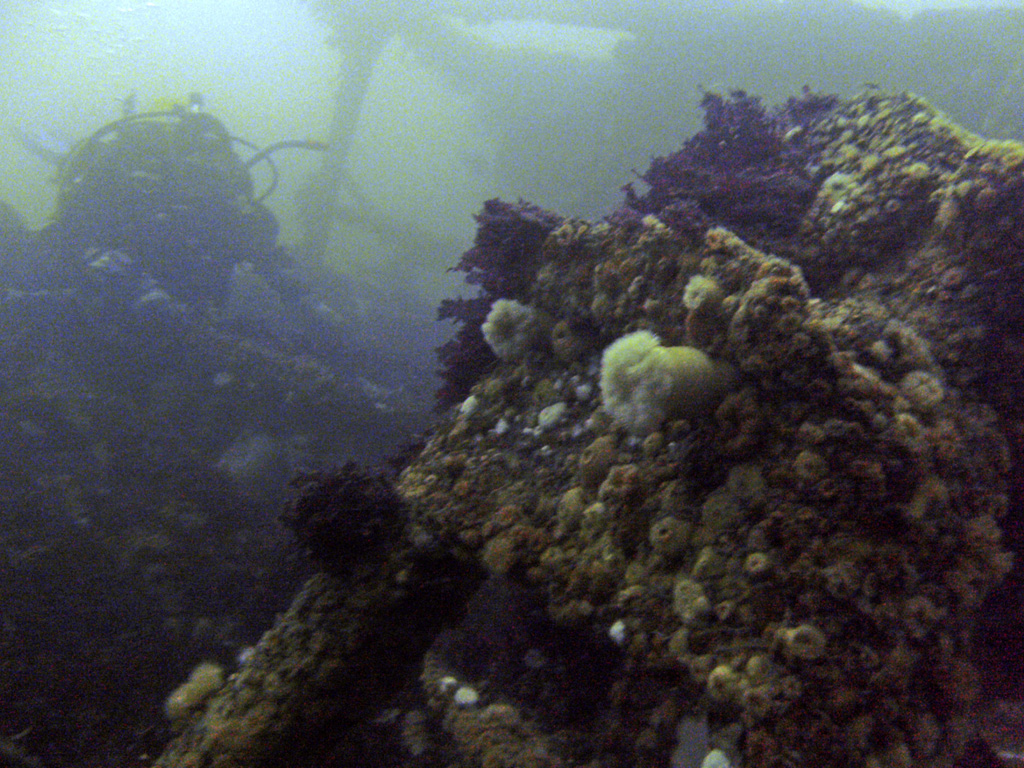
Martin S fights the current on the Hispania
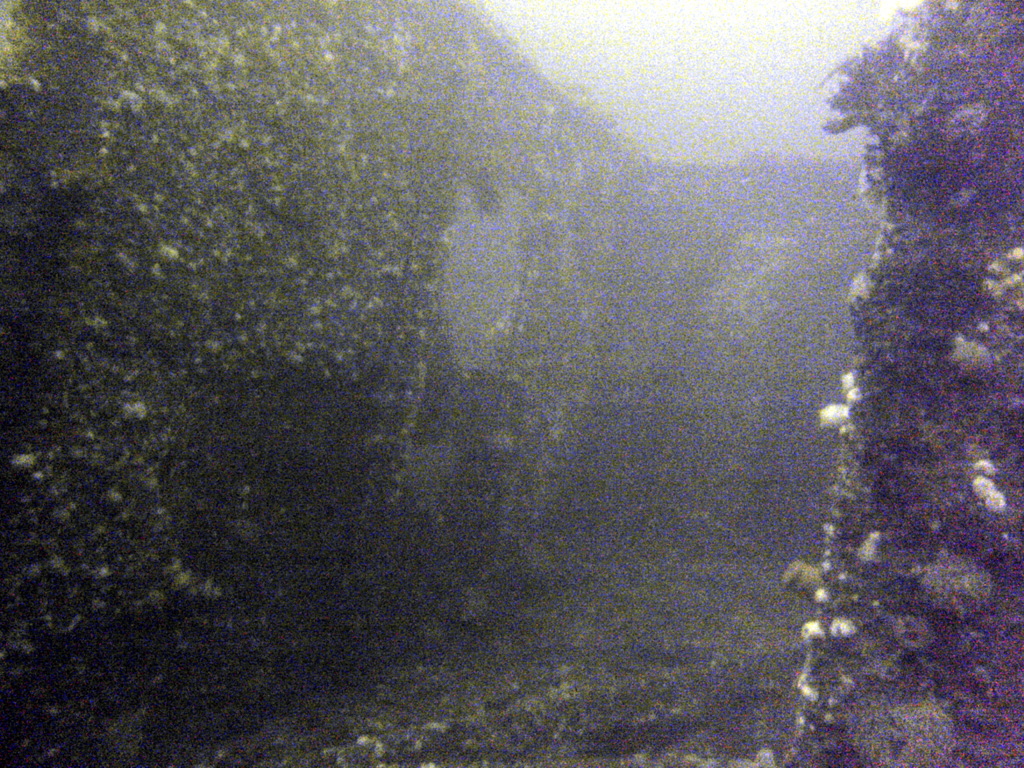
Superstructure room walls still intact at stern of Hisapnia
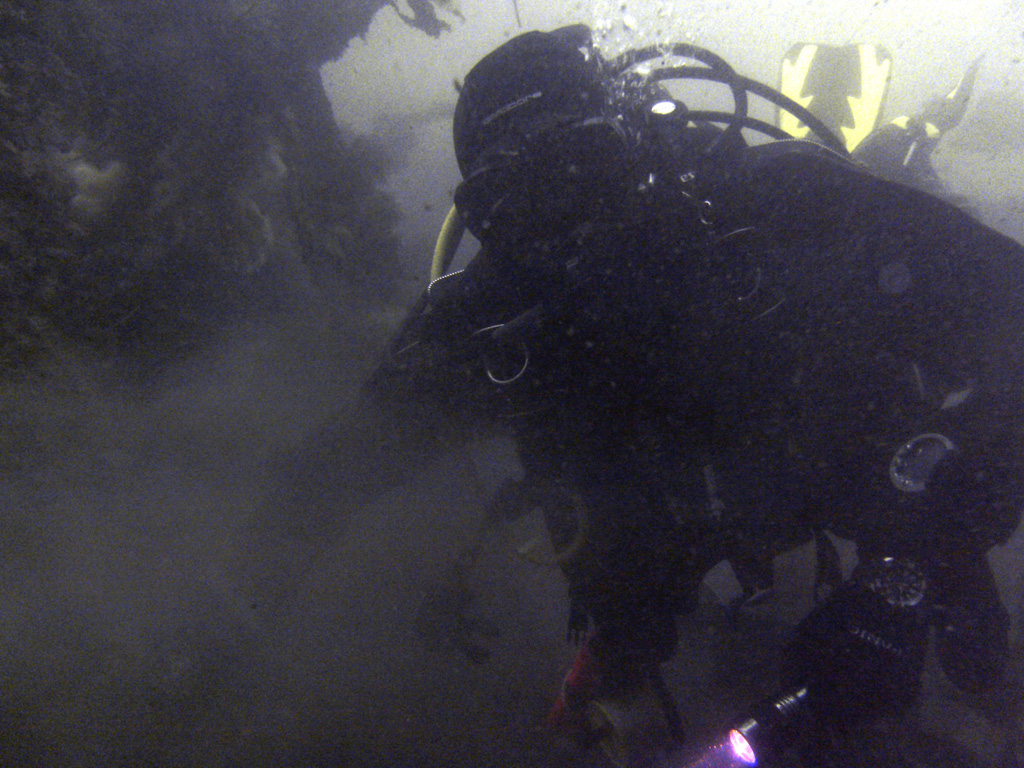
Me, stirring up silt, on the Hisapania
We dropped onto the centre of the deck and made our way aft, briefly hanging onto the hull and peering down at the rudder. Here there was a strong current running and being swept off the wreck was a real concern, so we crawled our way along through cabin walls until we reached the open deck above one of the huge open holds. Again the tide was fierce and I signalled to Martin to drop into the hold out of the tide. This was a good move and we explored this and the other holds for some time, before reaching the bow, Martin briefly doing a Leonardo Dicaprio impression, and then returning to ascend the shotline.
If you're ever in the Sound of Mull try and dive the Hispania, it's epic!
We then did a wall dive at Sligneach Mor. Some found this really enjoyable, but it was rather dull and lacking in anything to see for Martin and I and we both rated it as the worst dive of the week.
The final dive of the day was not until after 6PM, but there was plenty of light as we dropped onto the "John Prescott" as we all ended up calling the "John Preston".
There really isn't much to see of this very old wreck at all, but the subsequent wall dive was excellent, with very varied terrain and bountiful life.
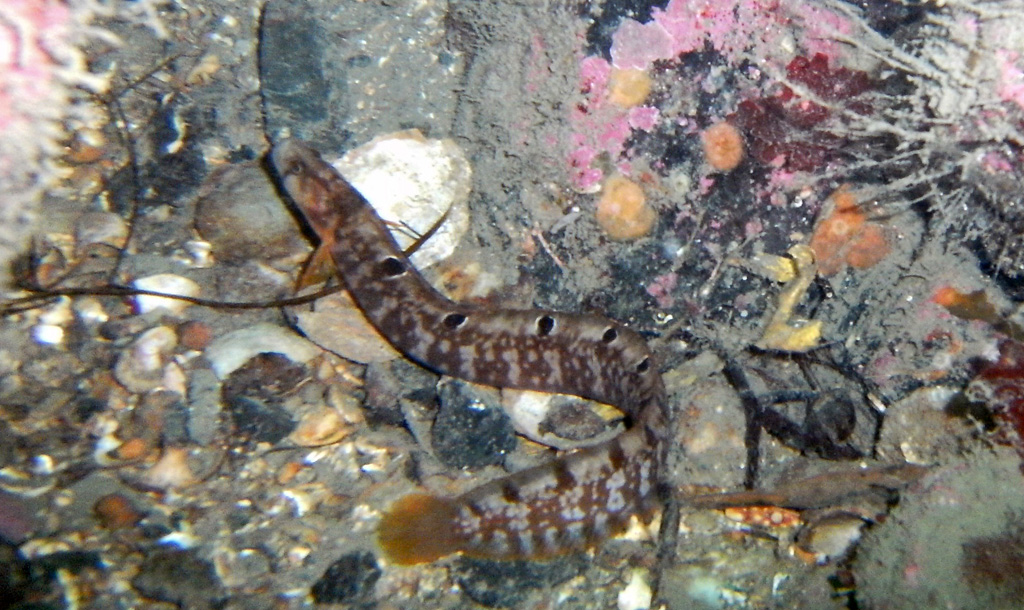
Butterfish
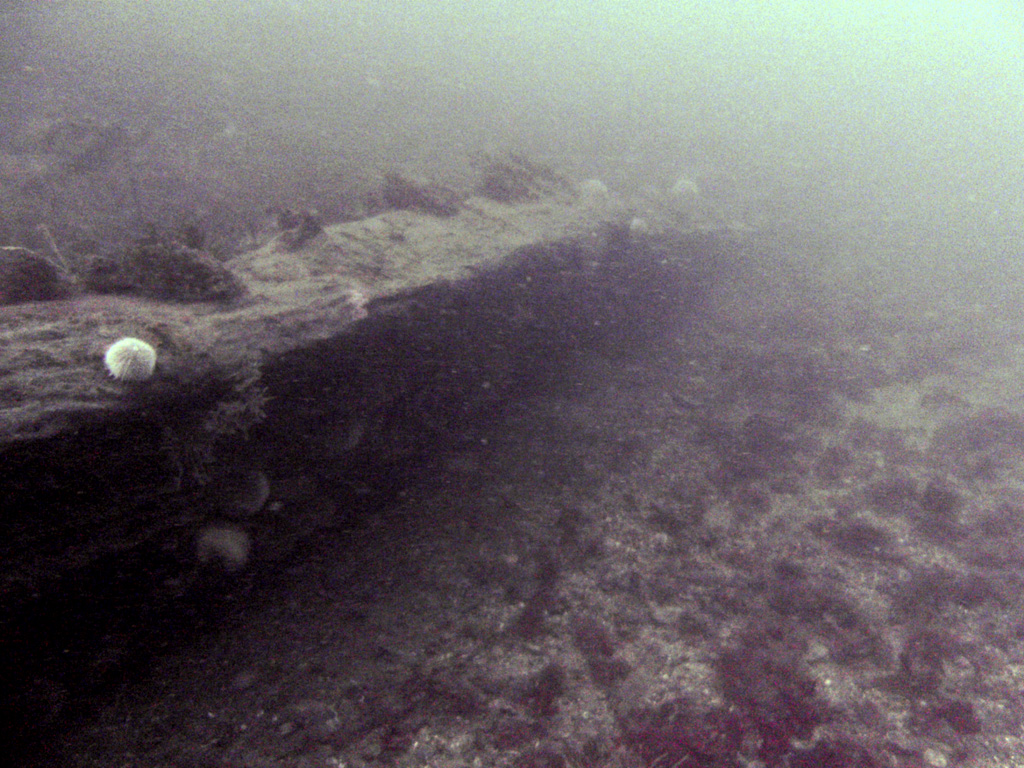
Keel of the 'John Prescott'
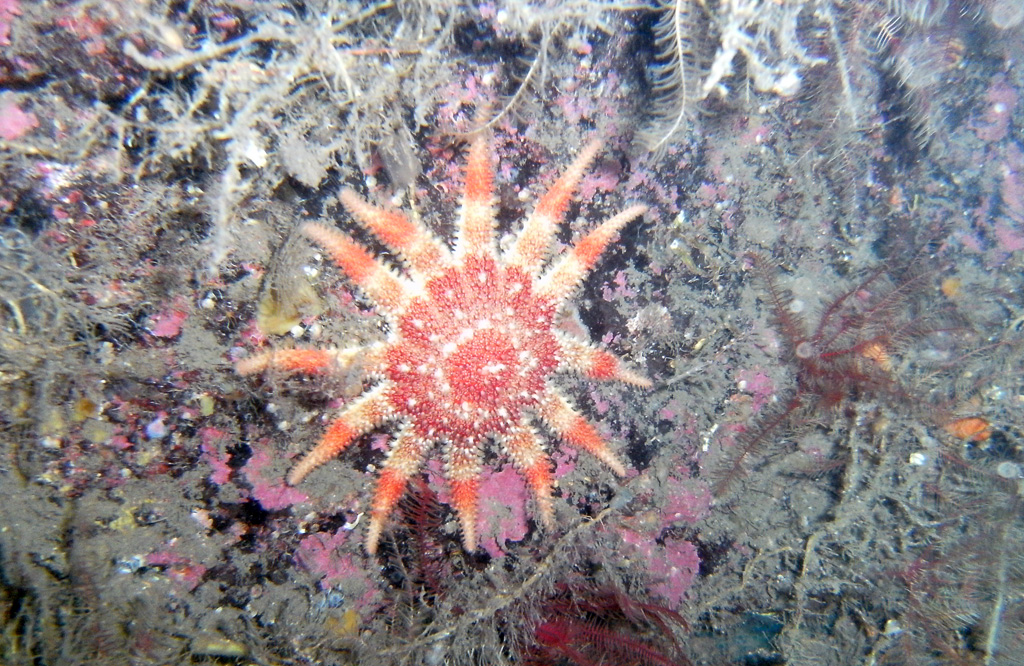
Sunstar on the wall near the John Preston
I was happy to continue on all day, but after 48 minutes we surfaced, having really enjoyed the dive.
The next day (Wednesday) was our day off from boat diving, everyone feeling they were getting a bit tired a 'nitrogen rich'.
I must admit to looking forward to a lie in, but equally I was keen to do a shore dive, until someone said we'd dive at 8AM! Fortunately, a few others felt the same and when the early risers reported they'd had a great dive, 3 of use set off at 3PM from the beach opposite the Lochaline Hotel.
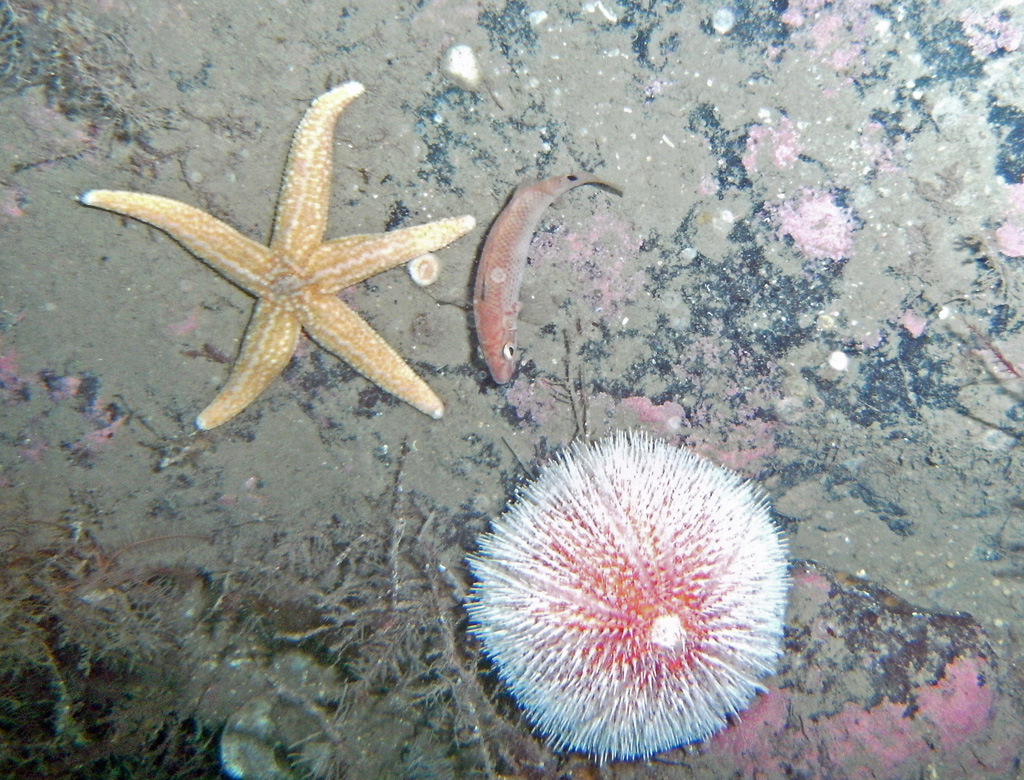
Plenty to see if you keep your eyes open on a wall dive
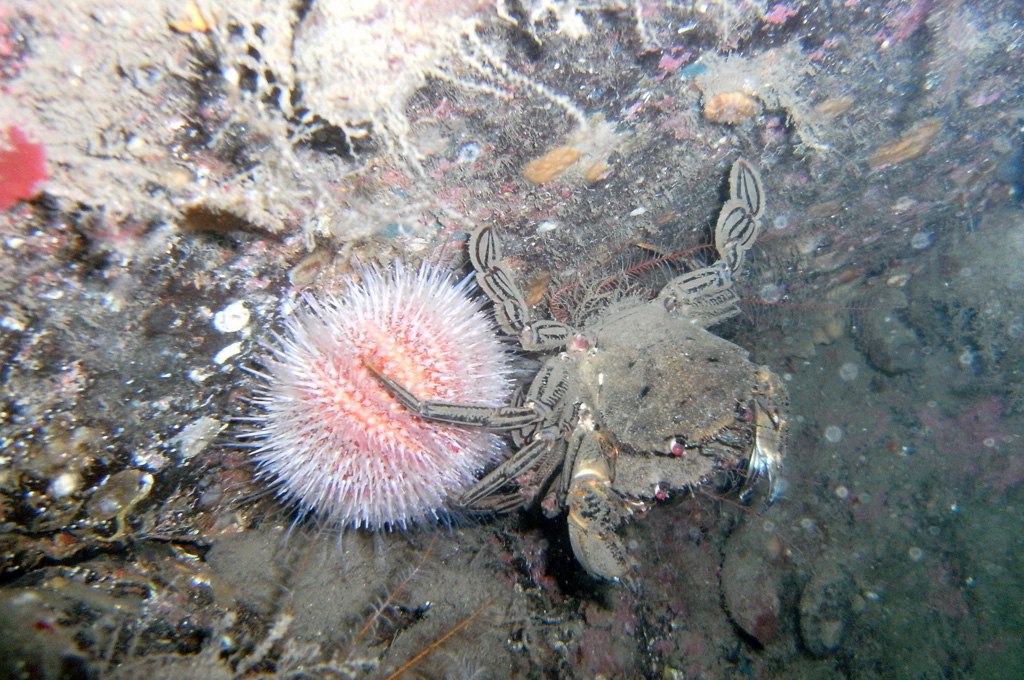
Crab Porn!
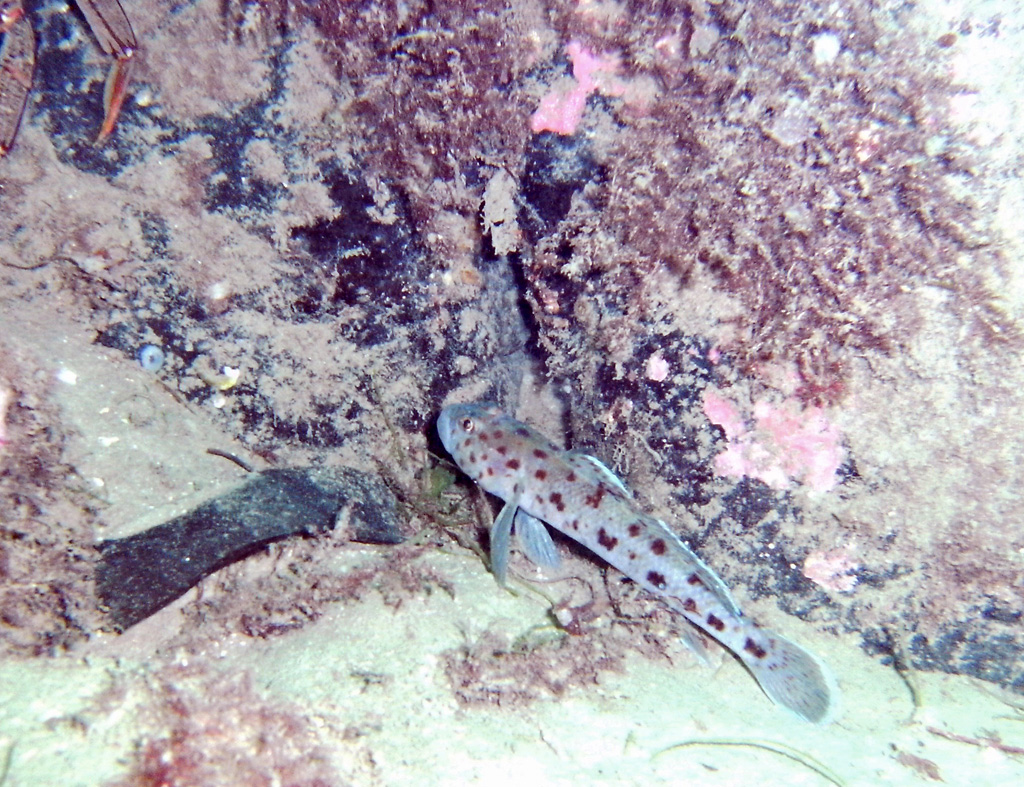
Tompot Blenny (I think!)
This was another enjoyable wall dive, with plentiful squat lobsters, blennies and even a beautiful Dogfish.
We swam out for 25 minutes or so and back for the same and spotted the sand that indicated the beach exactly where we expected. Another great dive, quite unexpectedly so in a way.
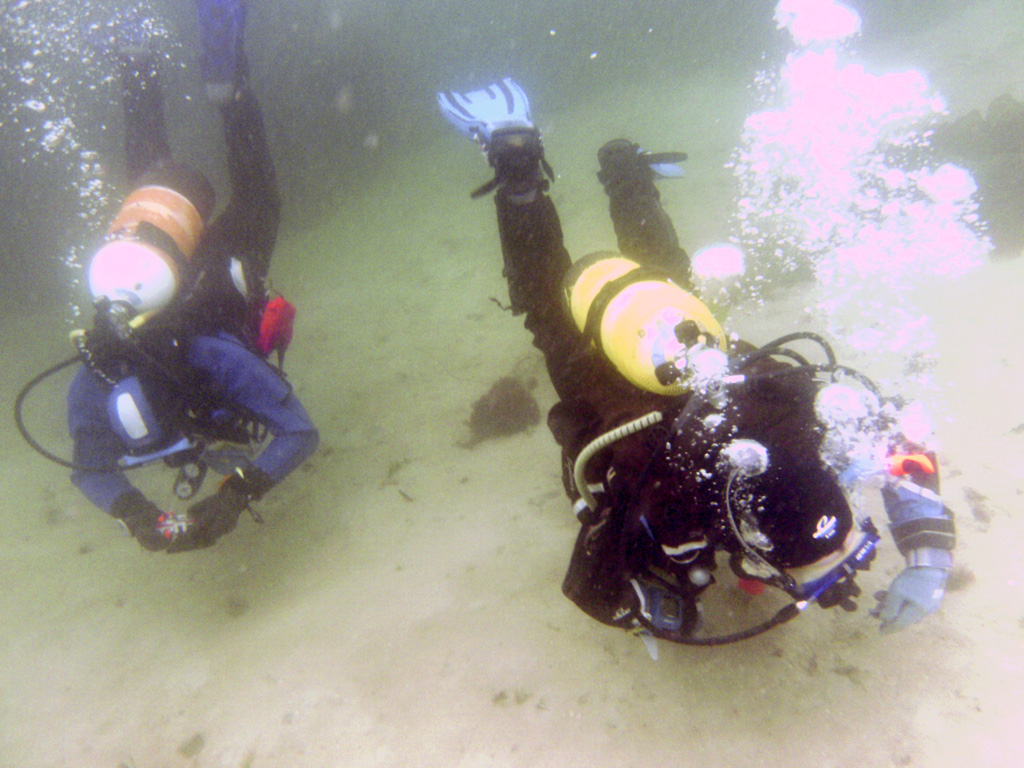
The Martins make their way back through the shallow approach to Lochaline Hotel Beach
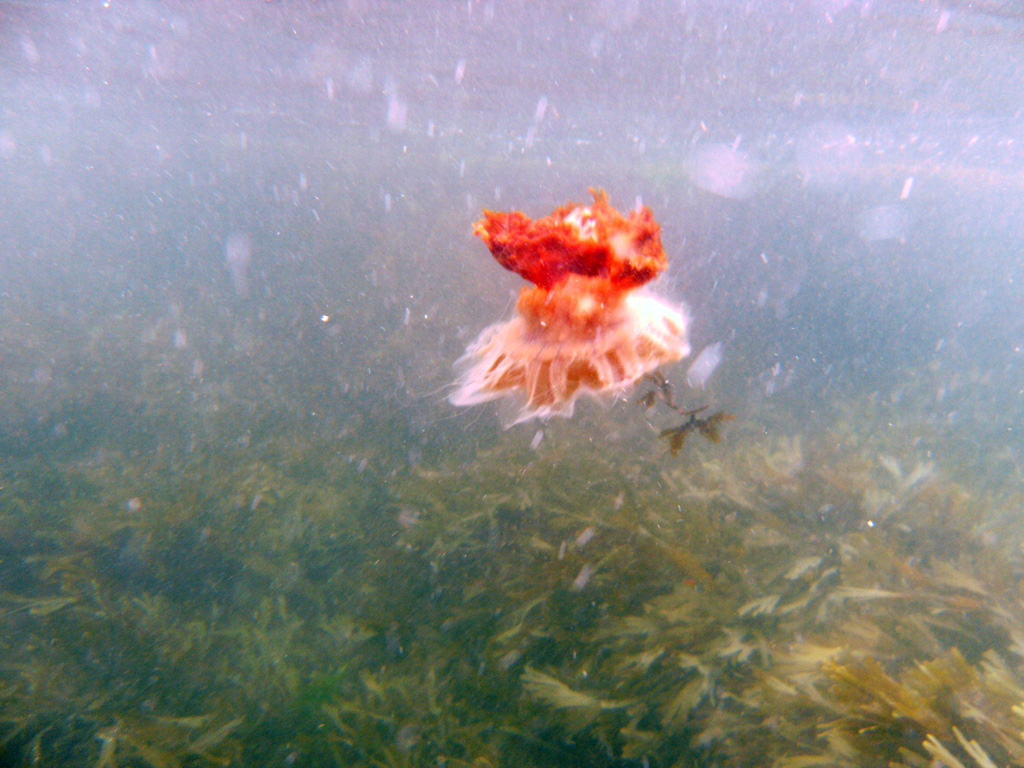
Lion's Mane Jellyfish were a constant hazard during our trip to the Sound of Mull
Thursday and Friday we were back on the boat. Thursday we dived the Shuna again and actually it was even better than the first time as we knew the geopraphy and could orientate ourselves with ease and enjoy the wreck and life on it. We then dived a wall as a 3, but got separated almost straight away and, rather disappointingly, my buddies continued their dive without surfacing to meet back up with me and check I was OK, so I lost a dive, although I was told it wasn't that exciting.
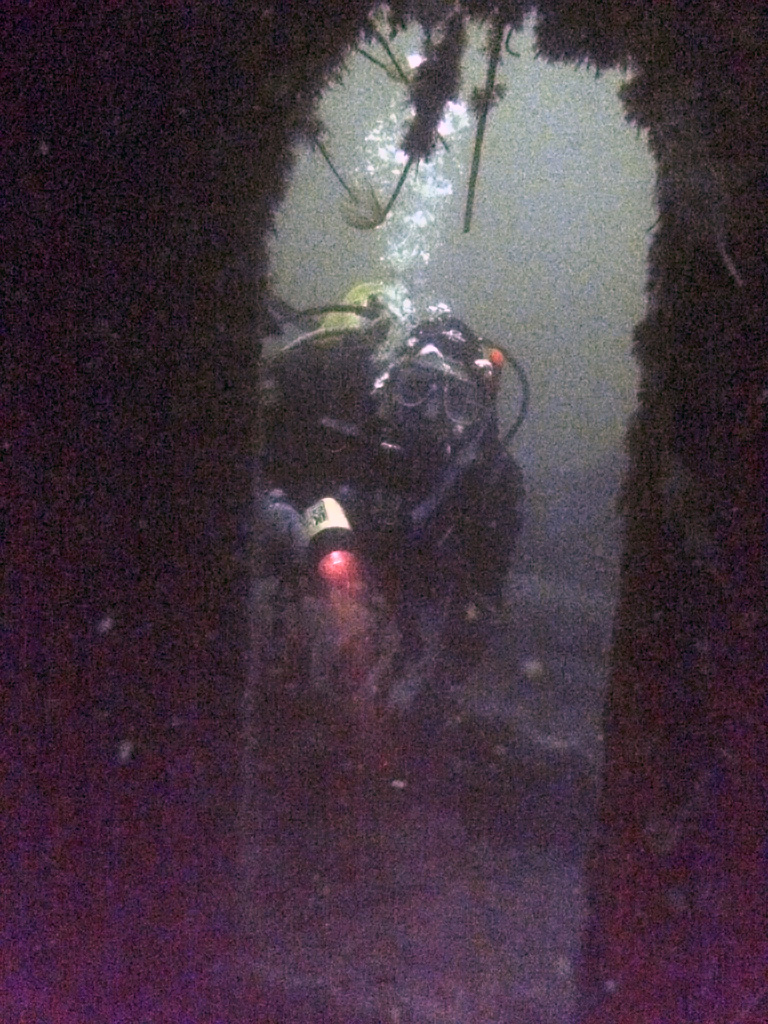
Martin S. waits for me outside the Shuna
We pulled into Tobermory (on Mull) for a break and then dive the 1895 wreck of the Pelican in a small gulley leading into the harbour.
This is in very shallow water and is very silty and, although we were pretty careful, vis did worsen dramatically as we dived it.
Some others thought this was a bad dive because of this, but after the big, metal wrecks the smaller wooden Pelican was a refreshing change and whilst the vis stayed reasonable, I really enjoyed it. We surface up the wall alongside the wreck and that was quite pleasant too, with lots of kelp.
We had been very lucky with the weather, but it finally turned on us on the Saturday, limiting where we could dive. We ended up doing the two wrecks we'd started the week with, the Thesis and the Breda, but as with the Shuna, familiarity actually made the dives even more enjoyable.
It was pretty rough in the Sound and although a few of us were up for a third dive, the skipper called enough and no-one really minded.
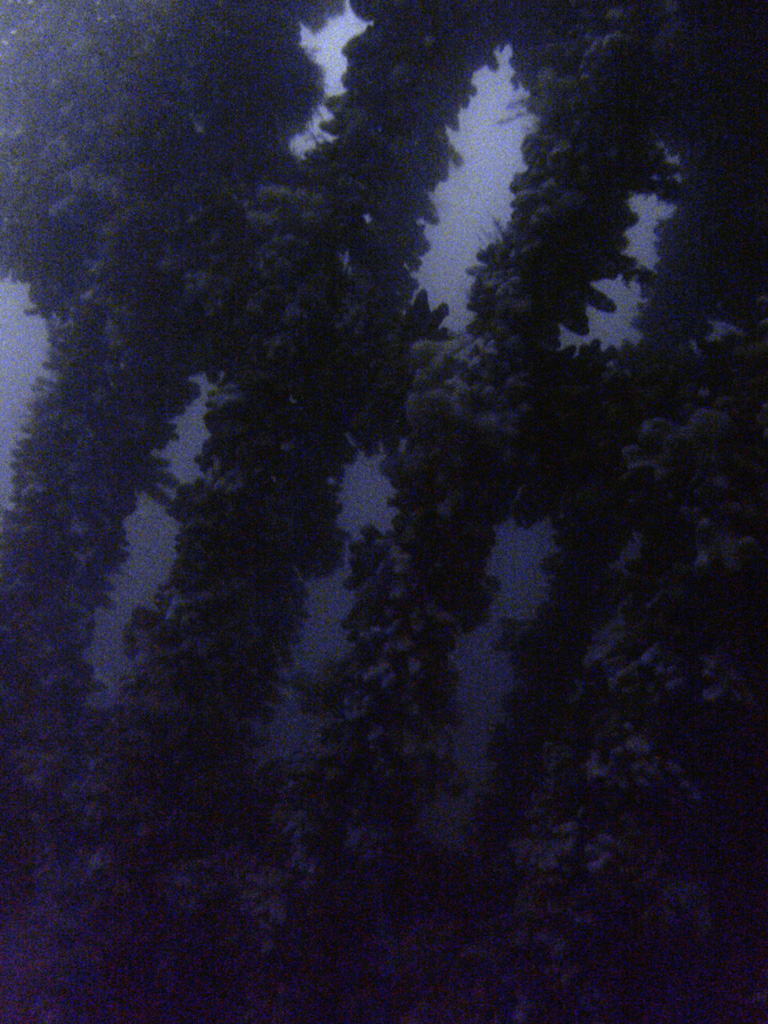
Thesis ribs
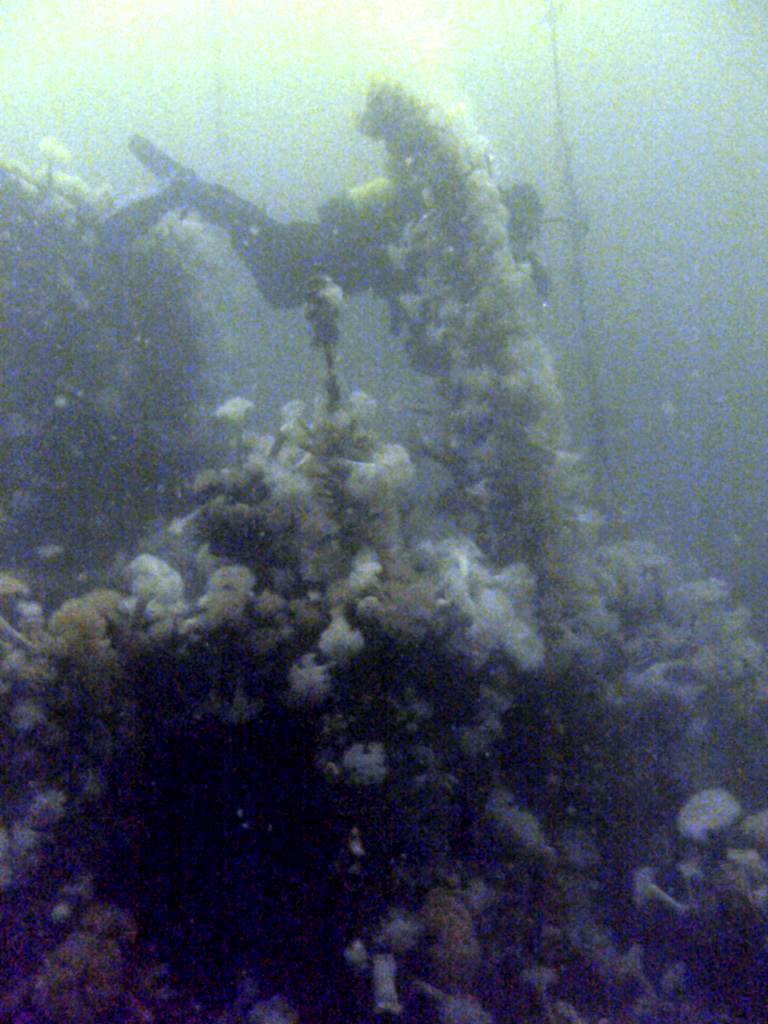
Lots of these things on the Breda's bow
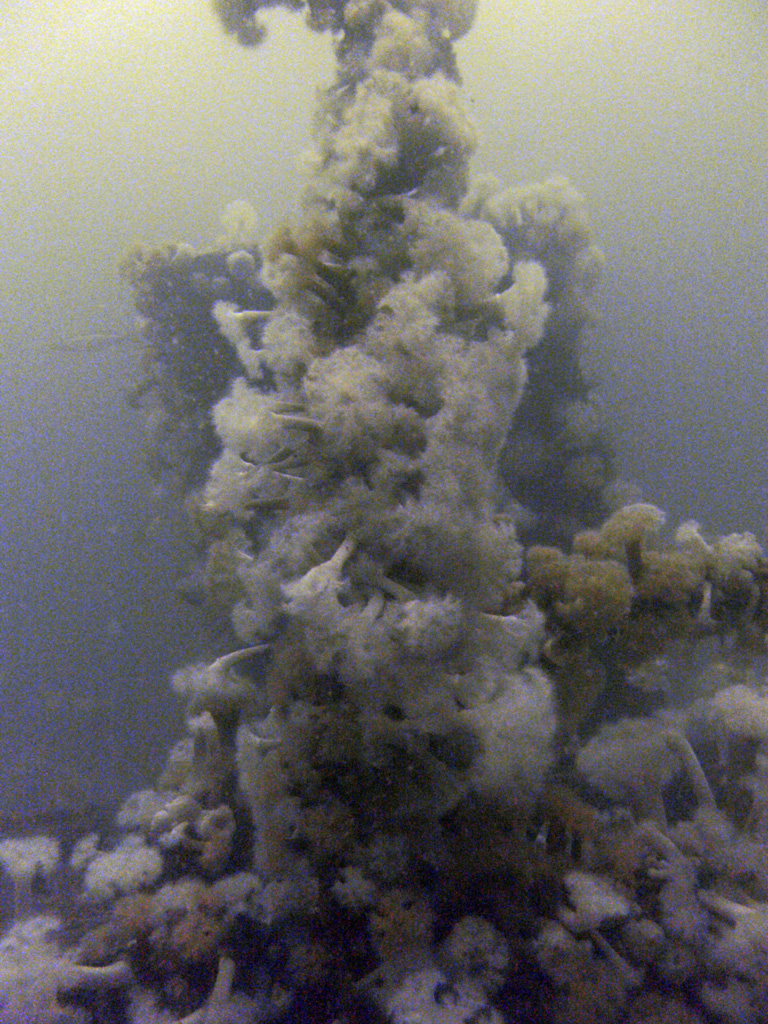
and even more!
It had been a great week's diving on some outstanding wrecks. Vis was generally good, the weather had been kind and the accomodation was roomy enough that a group of people of differing ages and personalities had got along well enough not to be at each other's throats at the end of it.
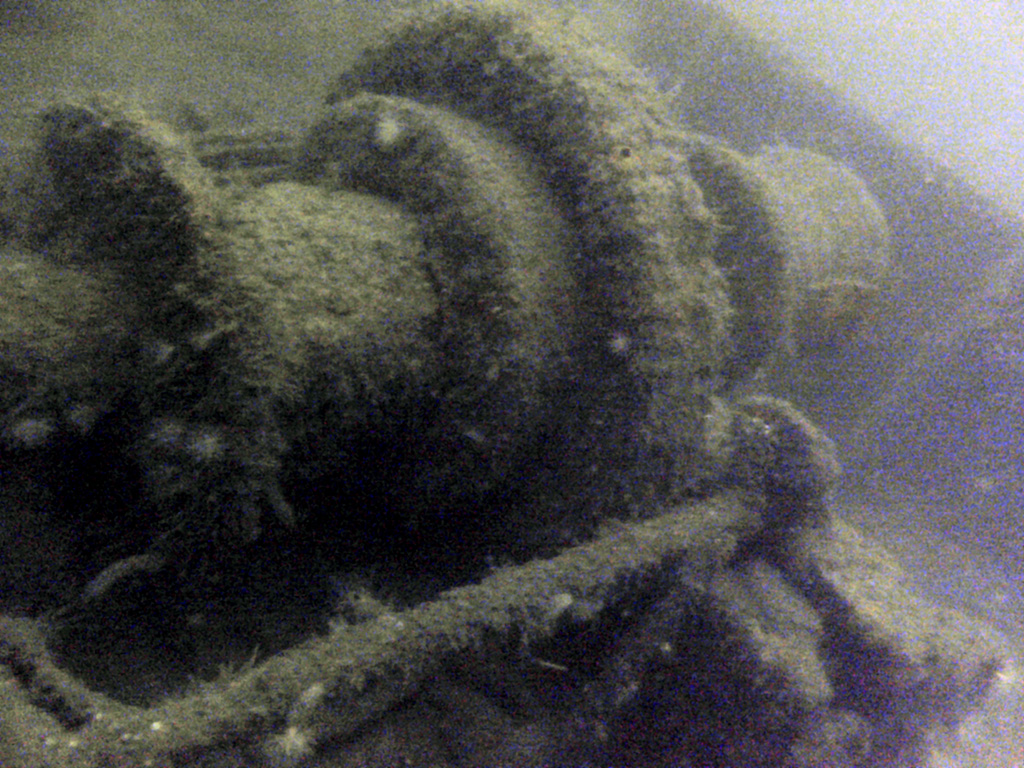
Winch on the Breda's deck
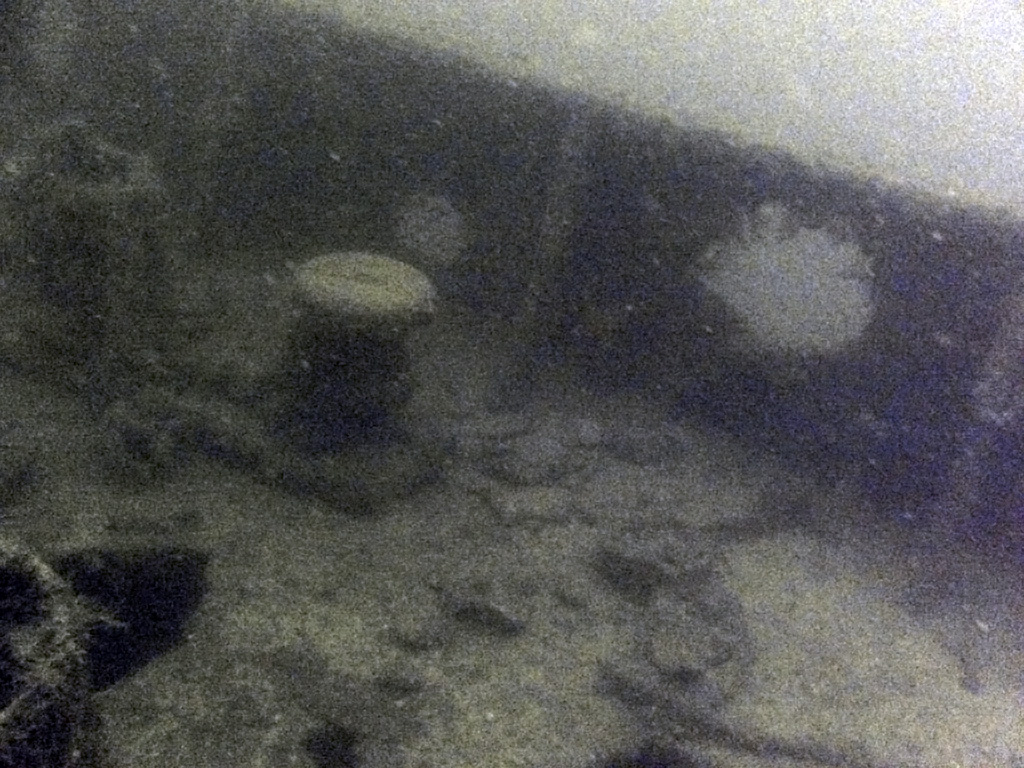
More deck furniture on the Breda
Everyone I've spoken to since has raved about how good the diving and accomodation had been. The boat was a good size for our party too and I think we'd all happily return to Lochaline and the Sound of Mull.
West Bay
Five of us planned to dive for two days in West Bay, along with members of the Basingstoke BSAC club.
Sadly a storm blew out the second day before it started, but we still managed a couple of good dives on the Saturday in lovely weather.
The first dive (HMS Landrail) was a bit of a wash out for Martin Parkes and I as we were forced off the shotline by an ascending diver struggling with his ears.
Of course we should have returned directly to the line, but vis seemed good and we drifted off it a little. Presumably more than we realised as, on reaching the sea bed, we could see nothing but sand and I mean nothing!.
No rocks, no fish, no crabs, just sand.
We swam a square pattern expecting to find the wreck, but after about 20 minutes at 30m we'd seen nothing, so we ascended. The others raved about what a good wreck it was, alive with life!
Fortunately for us, the second dive, The Baygitano out of Lyme Regis, was a stunning dive.
We stuck like a limpet to the shotline and as we reached the bottom I thought 'That's a big shoal of fish in front of the wreck'. What I then realised was that that shoal was just a tiny group away from the wreck and the actual wreck was heaving with, mostly, Bib. The wrecks' fairly flattened with virtually no opportunitt for penetration, but with so much life, I didn't care. I haven't seen so many fish in one location in UK waters, excellent dive with great vix.
Vobster Quay
Martin Parkes and I took an opportunity to dive at Vobster Quay in early October.
He's a qualified PADI Instructor and offered to train me as a Deep Diver, which we did.
We did 3 dives, the first was to carry out some exercises for the certification, hoping to reach the promised 40M, but in fact we were in silt by 34!
We swam back and found the submerged caravan and then continued onto the wheelhouse from a largish ship which sits there. We spotted the wreck that is there too, but left that for, we planned, the next dive.
After a 90 minute break we went in with the primary aim of finding the APC, which we'd tried and failed to find on a visit the previous November.
It was much closer than we expected and we had a look around it, before setting off, we planned, for the wrecked boat. However we got disoriented in a cloud of silt stirred up by some other divers and ended up swimming away from it and in the corner of the lake to the left of the approach road. If nothing else we saw a new part of Vobster.
We decided to have lunch and do a third dive, this time diving the plane which is segmented into 3 parts, as we both enjoy that.
We dropped in and straight onto the nose section, swimming through that, the wing section and the tail, exiting the rear door.
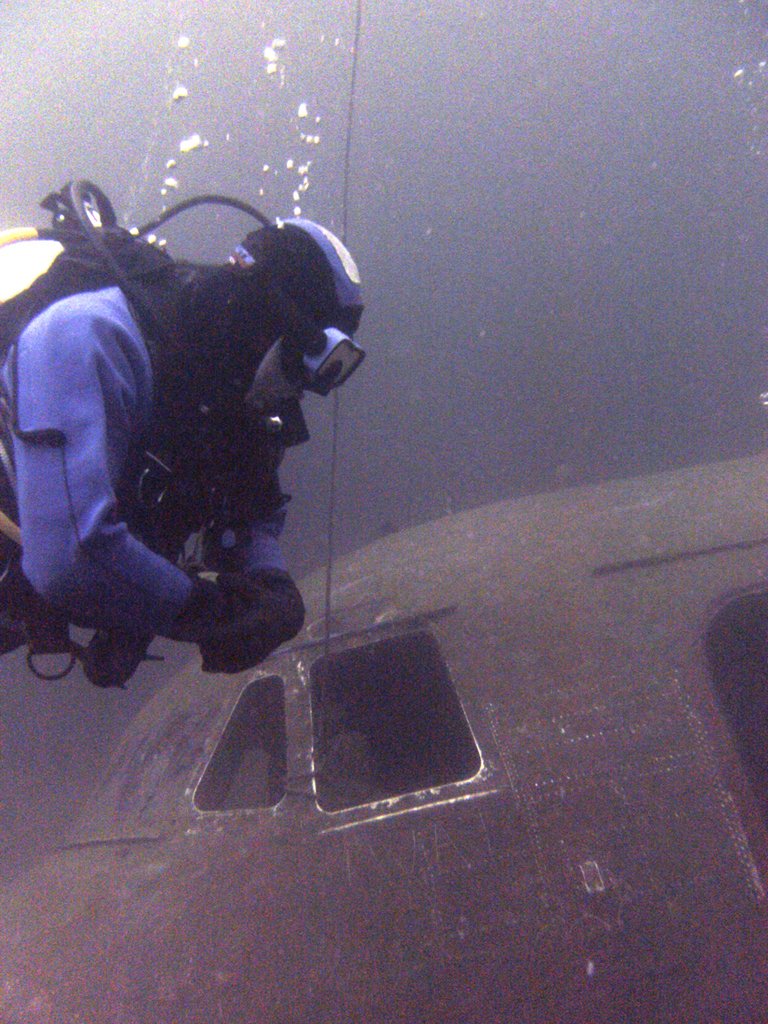
Martin P. considers the nose section of the plane at Vobster
We then dropped into the Crushing Works and down and to the left to find the tunnel. Geoff and I had failed to find it the previous November and it became clear why when Martin found it. At the top it's a rounded archway, but at the bottom a hard to see slot! We swam in and found the line and then switched off of our torches for a bit of 'line following in zero vis' practice. It's very dark in there, but as you follow the tunnel up, the diver ahead of you gradually becomes visible against the light at the end of the tunnel.
As we came out I noticed the edge of 'The Pit' and remembered the cabin cruiser wreck was close. We found it and swam over to it, going inside it and through to exit through the tiny bow opening, which required a bit of wiggling!
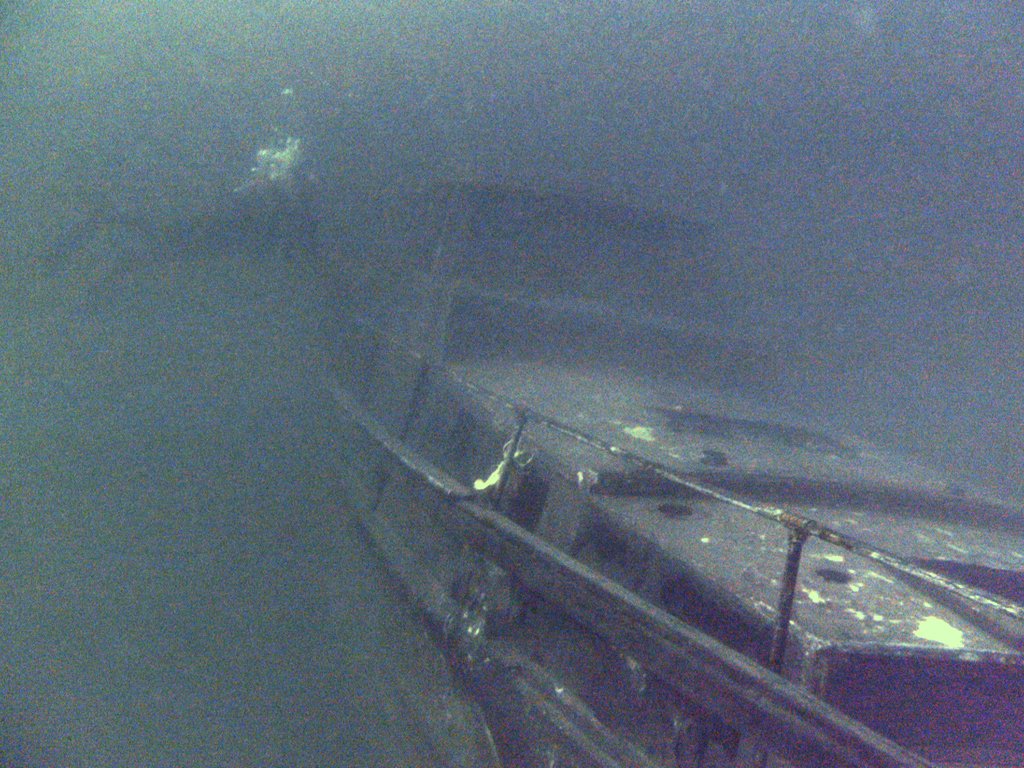
The Jacquin II wreck
A last look at the APC, Martin swimming right through it and we finished the dive by surfacing back at the kitting up benches.
The weather had been unseasonably summer and warm and on the 6m safety stops, the water was a balmy 17C, although it had been cooler down at 20+M!
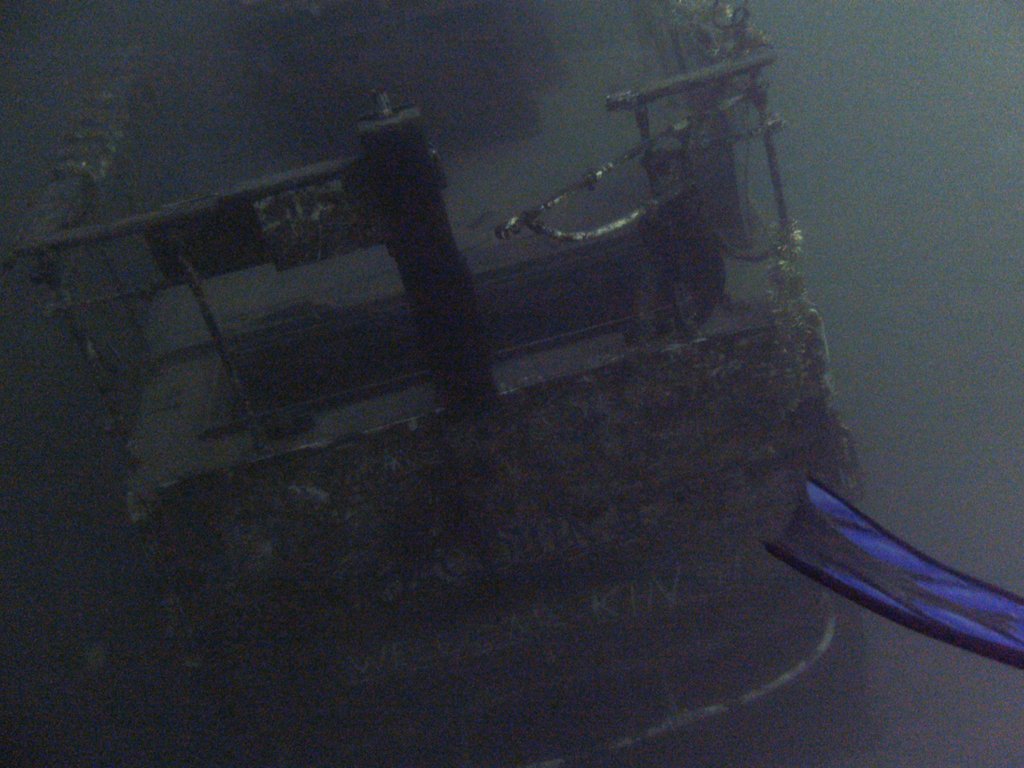
So long to Vobster, for now
Chepstow, Wrasbury, Exams and a BSAC Sports Diver!
A couple of weeks after Vobster, I joined a few of my fellow trainees down at NDAC in Chepstow. Quite a drive, down the M4 and across the Severn Bridge in poor weather, but the idea was to get a couple of dives in to complete the 'in-water' exercises for my Sports Diver qualfication.
Chepstow's known, in UK inland site terms, at least, for its good visibilty and it was pretty decent when we went, although it was pretty dank and, mostly, wet the day we went and the second dive, when I hoped to explore a bit more was abandoned as a fellow diver had trouble with her ears.
Long story short, I completed the exercises I needed to on my first dive and now only had the dreaded 'exam' to complete.
A fellow club member and I had a couple of quite enjoyable dives in the Northern end of Wrasbury a couple of weeks later, enjoying surprisingly good viz for a change.
A few weeks passed and I joined our Chief Instructor, Geoff, for the final lecture I'd never attended (I think I was skiing the week my cohorts did it) and then took the test.
I scraped a pass and a few days later the forms were signed and I am now, at last, a qualified BSAC Sports Diver (I've even started the Dive Lectures for Dive Leader!). It's taken almost two years, which is probably too long, but as I had PADI qualifications to dive to 30M (now 45) it's not held me back much over the last couple of years, but I'm looking forward to 2014's dives as a Sports Diver/Dive Leader Trainee.
I've reached 97 logged dives, as of the 27th November (There might be a couple left in the year, but I doubt I'll reach the 100 to be honest - I set myself a notional target, to encourage myself to get out and diving, and it was to reach 90 this year), but as with previous years that's been marked by a wide variety of dives. I know some people clock up hundreds of dives a year, just by jumping in the same lake time after time, but it don't really see the point of that.
I'm much happier expanding my diving horizons and with dives in Scotland, California and Mauritius as well as more local and inland ones, I've certainly done that this year.
Read some more of my diving experiences, by clicking the icons below.


